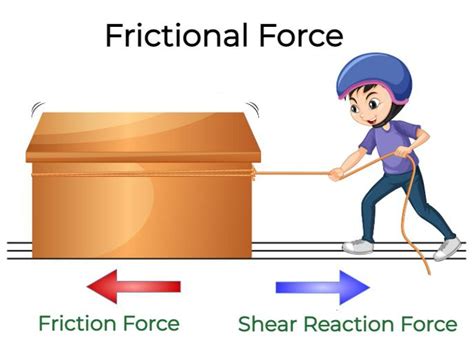Introduction

Friction, a ubiquitous force in our physical world, plays a crucial role in innumerous aspects of daily life. From the movement of cars to the act of walking, friction exerts a fundamental influence on our interactions with the environment. By understanding the work done by friction, we can harness its power to enhance our lives and solve complex problems.
Types of Friction
Friction occurs when two surfaces come into contact and oppose relative motion. There are three primary types of friction:
- Static friction: Occurs when objects are stationary relative to each other. It prevents objects from sliding or rolling, as seen when a car rests on a road surface.
- Sliding friction: Occurs when objects slide across each other. It is generally lower than static friction and determines the force required to move an object.
- Rolling friction: Occurs when an object rolls on a surface. It is typically the lowest form of friction and allows for smooth movement, as in the case of tires rolling on asphalt.
Parameters Influencing Friction
The magnitude of friction depends on several key parameters:
- Coefficient of friction: A dimensionless quantity that represents the material-dependent strength of friction between two surfaces.
- Normal force: The perpendicular force between two surfaces in contact. A stronger normal force typically leads to higher friction.
- Surface roughness: Rougher surfaces have more irregularities, which interlock more effectively, resulting in greater friction.
- Sliding velocity: As sliding velocity increases, friction may decrease due to changes in the contact area and the formation of a thin film of gas or liquid between the surfaces.
Work Done by Friction
Work is done against friction when an object is moved in the opposite direction of the frictional force. The work done is given by:
Work = Force × Displacement
where the force is the frictional force and the displacement is the distance the object moves in the opposite direction of the force.
Applications of Friction
Friction has numerous practical applications in various fields:
- Transportation: Provides traction for vehicles, allowing them to move and brake effectively.
- Manufacturing: Utilizes friction in processes such as drilling, cutting, and grinding.
- Braking: Friction creates the force that stops vehicles and machinery.
- Clothing: Friction between clothing fibers helps keep us warm.
- Walking: Friction between shoes and the ground enables us to walk and run.
Benefits of Friction
Friction provides several advantages:
- Safety: Prevents uncontrolled movement, enhancing stability and preventing accidents.
- Efficiency: Facilitates energy transfer in machinery and engines.
- Control: Allows us to manipulate and control objects through grasping and manipulating.
- Comfort: Provides warmth and comfort by creating friction between clothing and our skin.
Overcoming Friction
While friction can be beneficial, it can also create challenges in certain situations. Methods to overcome friction include:
- Lubricants: Reduce friction by creating a slippery layer between surfaces.
- Bearings: Utilize rolling elements to minimize sliding friction.
- Surface modifications: Enhance the smoothness and hardness of surfaces to reduce friction.
- Anti-skid materials: Increase friction to improve traction in slippery conditions.
Conclusion
Friction, an essential force in our physical world, plays a critical role in countless applications. Understanding the work done by friction empowers us to harness its power effectively and mitigate its challenges. By utilizing friction, we can enhance safety, improve efficiency, create comfort, and solve complex problems. As research continues, new and innovative applications of friction will undoubtedly emerge, unlocking further advancements in science and technology.
